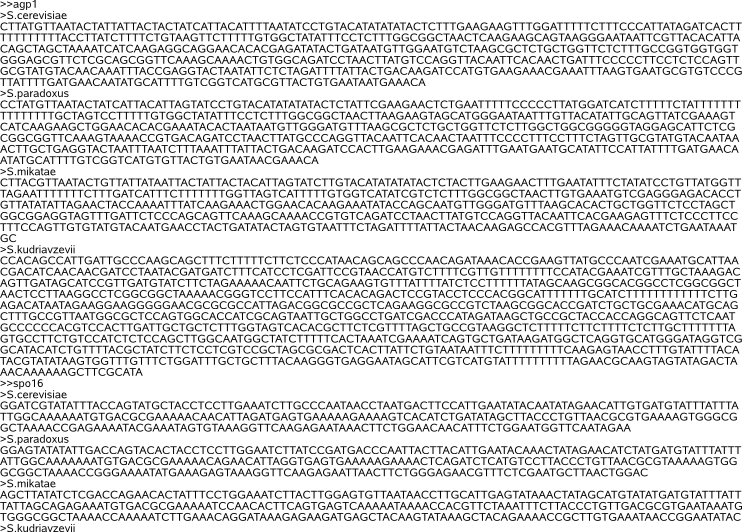|
In bioinformatics, FASTA format is a text-based format for representing DNA sequences, in which base pairs are represented using a single-letter code [A,C,G,T,N] where A=Adenosine, C=Cytosine, G=Guanine, T=Thymidine and N= any of A,C,G,T. The format also allows for sequence names and comments to precede the sequences.
A sequence in FASTA format begins with a single-line identifier description, followed by lines of DNA sequence data. The identifier description line is distinguished from the sequence data by a greater-than ('>') symbol in the first column. The word following the ">" symbol is the identifier of the sequence, and the rest of the line is a description (optional) separated from the identifier by a white space or tab. The sequence data starts on the next line following the text line and ends if another line starting with a ">" appears; this indicates the start of another sequence.
For DNA sequences from one organism :
The sequence identifier typically refers to the target gene regulated by the hidden motif in the dataset:
>target_gene1 description(optional)
lines of {ACGTNacgtn}
>target_gene2 description(optional)
....
>target_geneEnd description(optional)
lines of {ACGTNacgtn}
For orthologous DNA sequences from multiple organisms (input for NOrthoMotifSampler):
Sets of orthologous sequences (regulating the same target genes in different organisms) are separated by a line consisting of a double greater-than ('>>') symbol in the first column. The word following the '>>' symbol is further called the group identifier, optionally followed by a tab-spaced more detailed description. The group('>>') identifier typically refers to the target gene regulated by the hidden motif in the dataset. The following sequence('>') identifiers now refer to the organism genomes of the subject orthologous sequences:
>>target_gene1 description(optional)
>organism1 description(optional)
lines of {ACGTNacgtn}
>organism2 description(optional)
....
>>target_gene2 description(optional)
>organism1 description(optional)
lines of {ACGTNacgtn}
>organism2 description(optional)
....
>>target_geneEnd description(optional)
....
>organismEnd description(optional)
lines of {ACGTNacgtn}
|


